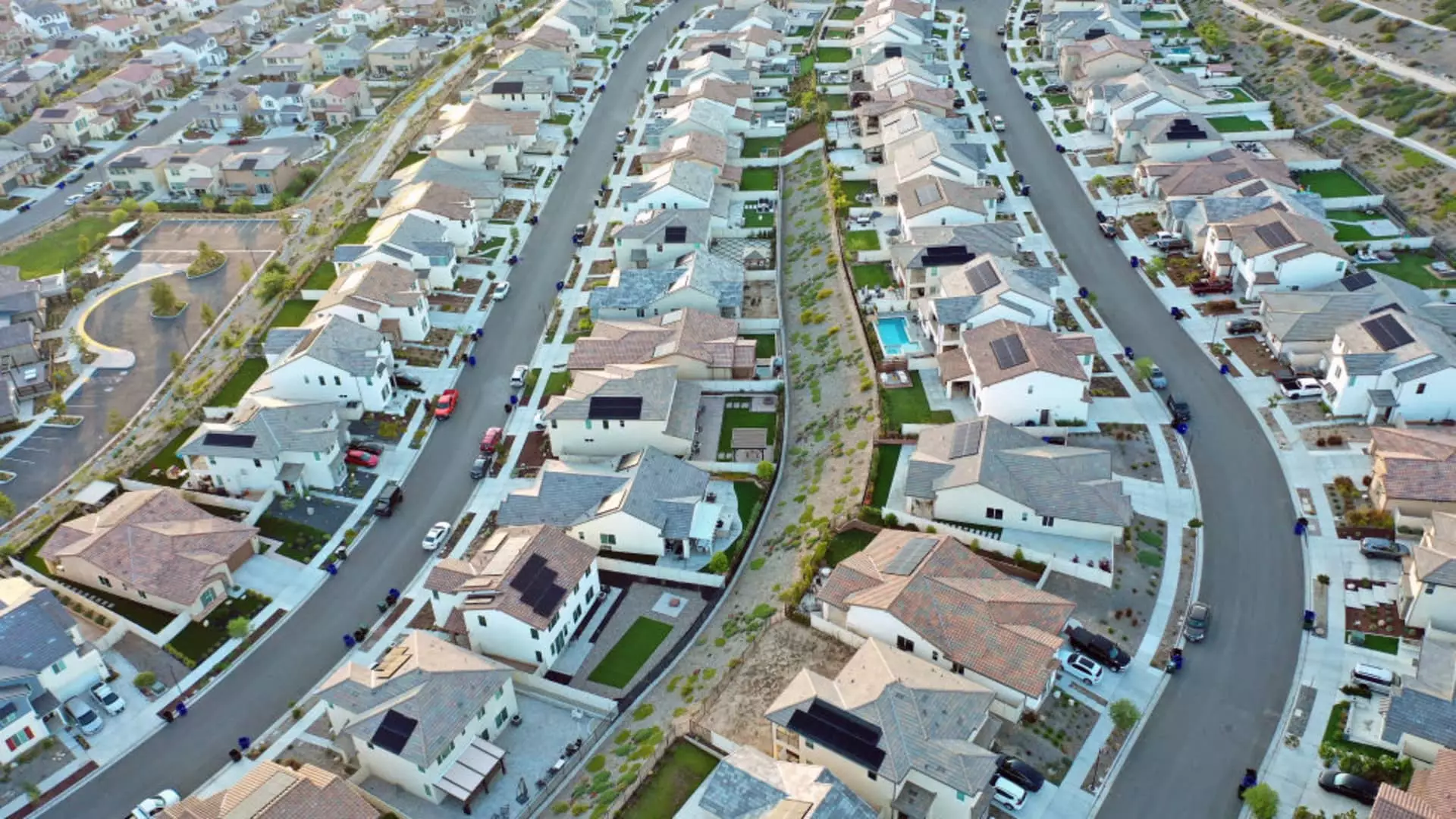As interest rates float at elevated levels, many U.S. homeowners find themselves both fortunate and hesitant. They are increasingly sitting on a considerable amount of home equity, yet the general reluctance to leverage this untapped resource remains pervasive. This situation is transforming, albeit gradually, as recent trends indicate a modest recovery in home equity withdrawals.
Currently, U.S. homeowners collectively possess over $17 trillion in home equity, a staggering figure that reflects the buoyancy of real estate markets in previous years. However, the inability to utilize this wealth has been shaped largely by rising interest rates over the past two years. With the Federal Reserve continuously hiking rates, many individuals have opted to remain on the sidelines, stashing this valuable asset instead of accessing it for essential expenses.
Recently, there has been a shift. In the third quarter of the year, homeowners withdrew approximately $48 billion from their home equity, the highest figure witnessed in two years. While this indicates a growing willingness to tap into their equity, homeowners are still displaying a healthy dose of caution. The average homeowner now holds about $319,000 in equity, with approximately $207,000 deemed tappable after accounting for standard lending requirements, which generally necessitate maintaining at least 20% equity in the home. This withdrawal rate represents a mere 0.42% of the tappable equity, significantly lower than the patterns observed before the Fed’s rate hikes.
The implications of this trend are two-fold. Firstly, homeowners are foregoing opportunities to invest in home improvements, renovations, and other significant expenses, such as education or medical bills. As laid out by Andy Walden, a vice president at ICE Mortgage Technology, the total equity extracted over the past ten quarters has reached $476 billion, merely half of what would typically be expected under more stable interest rates. This creates a paradox where wealth is amassed but remains dormant, ultimately failing to circulate back into the economy.
Secondly, as homeowners remain hesitant to withdraw their equity, the broader economic dynamics may shift. Untapped dollar amounts contribute to stagnation in sectors reliant on consumer spending, like home improvement retailers and contractors. Potential revitalization hinges on easing interest rates, which can incentivize homeowners to capitalize on their equity.
Interest rates play a pivotal role in shaping homeowners’ decisions regarding their equity. For instance, the monthly payments associated with a Home Equity Line of Credit (HELOC) saw a dramatic surge over the past two years. A HELOC of $50,000 that cost a homeowner as little as $167 per month in March 2022 now demands payments nearing $413 by January the following year. However, recent rate cuts offer a glimmer of hope for those contemplating equity extraction.
Walden’s analysis suggests that the anticipated cuts could create favorable circumstances for both new and existing HELOC users. If aspects remain steady and projections hold, homeowners could see the repayments on a $50,000 withdrawal dip below the $300 mark. Although this figure exceeds the 20-year average, it still marks a 25% reduction from peaks observed earlier.
As homeowners grapple with economic uncertainties, the trajectory of home equity growth is witnessing a deceleration. Abating home prices, compounded with increasing inventory in the housing market, have dampened sellers’ pricing power as buyers become discerning. With rising mortgage rates, the equilibrium within the real estate market faces disruption, potentially leading to an ongoing recalibration of home values.
In light of these shifting dynamics, many homeowners must juggle their reservations against the opportunities presented by a favorable economic climate. Home equity remains a considerable asset, but unlocking its potential requires navigating the complexities of current interest rates and financial obligations. Making informed decisions about leveraging this equity will dictate whether homeowners can sustain their financial stability while allowing much-needed funds to flow back into the economy.
The interplay of interest rates, homeowner sentiment, and market conditions creates a multifaceted challenge for homeowners poised at the crossroads of equity utilization. Understanding this balance holds significant implications for both individual households and the broader economy as the market evolves in response to changing financial landscapes.

